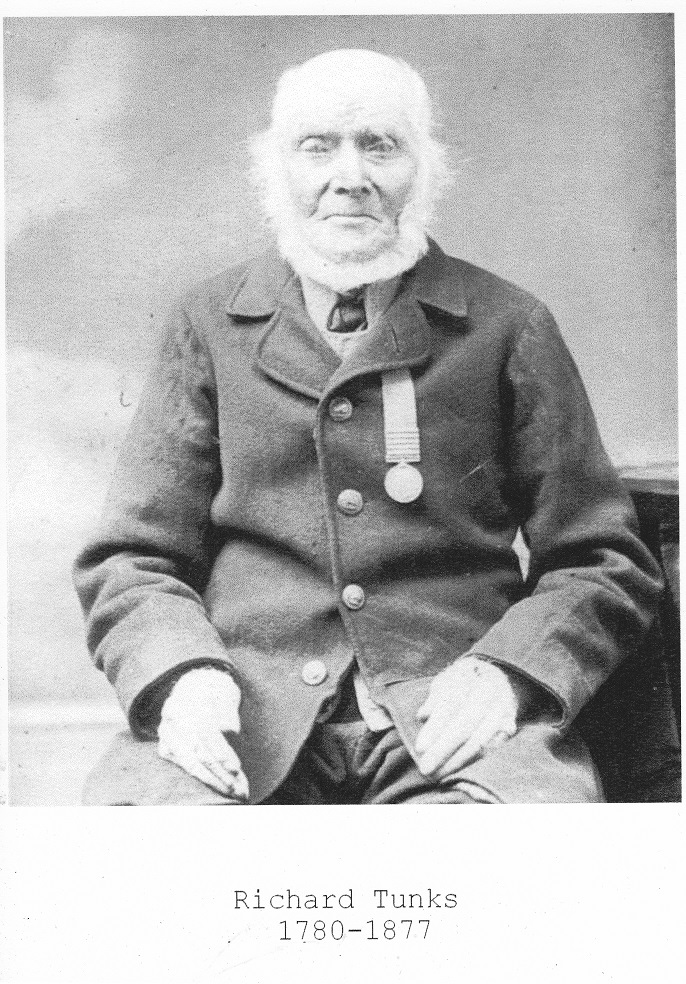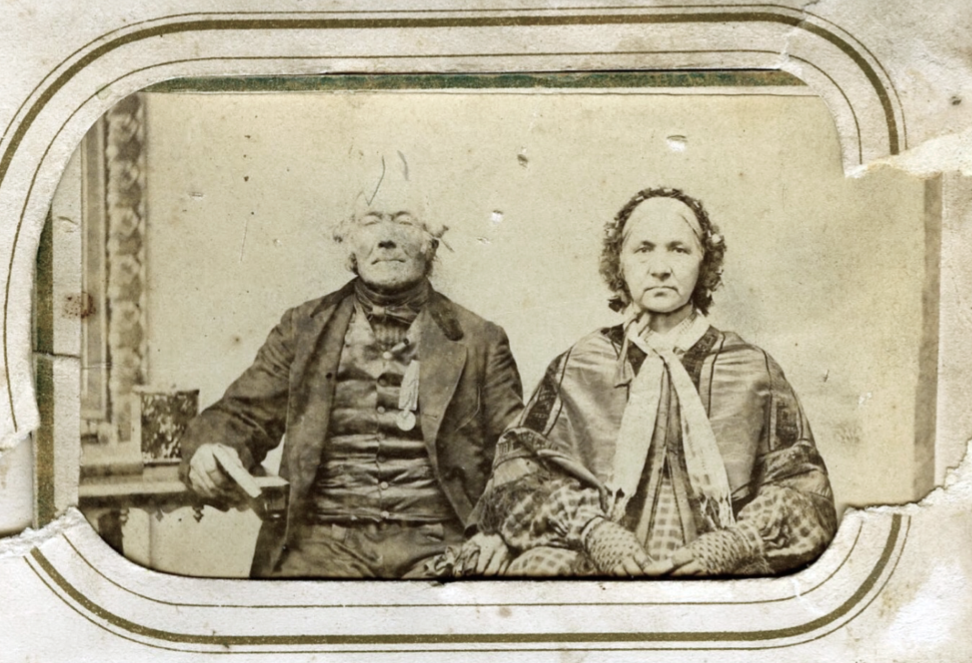Commissioners Road was constructed on an existing indigenous trail route, which has crossed this region for thousands of years prior to the arrival of European settlers. In approximately 1810, the government of Upper Canada Military Commissioners ordered the construction of a military road that would reach from Burlington through to Detroit in the west. This road followed the already-existent traditional trail and was expanded to facilitate horses and wagons alike, and named Commissioners Road. Along the road southwest of the growing City of London, brickyards and farms sprung up with a small community, which would become known by the same name. A 3 km portion of the road was known as ‘Brick Street’, and witnessed much activity by British, Indigenous and American forces during the War of 1812.
At Brick Street Cemetery are the graves of ten individuals who fought in the War of 1812, both regular soldiers and militia. Their stones are marked with flags. As well, several buried here suffered from the loss of property and loved ones. At least 86 people buried here were born before the War of 1812, several with family ties to the American Revolution.
Like any early settler burial ground in the region, the war affected those beyond the soldiers, and many people at Brick Street felt impact of the war through the loss of property and loved ones. The most famous person from this conflict is Phoebe McNames, who is traditionally credited for her contribution at the Battle of Hungerford (Reservoir) Hill in 1813. The follow sections will discuss several significant individuals who were involved in the War.
Phoebe McNames (nee Brink)
This remarkable woman was born in the Pennsylvania, USA, on November 26, 1796/7, daughter to Nicholas Brink and Elizabeth Monger. Her father moved to Canada in 1797 and settled on a farm in Oxford County where her father had received a 200-acre land grant, returning south to move his wife and infant daughter to their new farm by 1799. The legend that surrounds Phoebe is related to the War of 1812, and the Battle of ‘Hungerford Hill’, which is known colloquially today as ‘Reservoir Hill’ on Commissioners Road South, in London. A contributor to the Illustrated Historical Atlas of the County of Middlesex, Ontario wrote an account of the battle nearly 60 years after the event, but research by the Friends of Brick Street Cemetery have since confirmed many of the dates and underlying facts. The account read as follows:
“The defeated and disorganized army of General Proctor retreated after the Battle of the Thames by way of the Longwoods and Commissioners’ Roads, through the County of Middlesex, to Burlington Heights. During this retreat a skirmish took place in the Township of Westminster, near the Village of Byron. Captain Carroll having under his command a troop of volunteer cavalry and a detachment of militia infantry, all of the County of Oxford, was engaged in convoying a number of wagons containing wounded men and baggage from the scene of battle, when he was attacked on the Commissioners’ Road, near Byron, by the advance guard of General Harrison’s army, consisting of Kentucky mounted riflemen. Carroll being in charge of wounded men and baggage, could not retreat, and was obliged to make the best defence in his power. He posted his little command on the summit of a beautiful rounded hill, which was covered then as now with a scattering growth of scrub oaks, and around which the Commissioners’ Road winds. The enemy dismounted and charged up the hill in greatly superior numbers, but found more than their match in the gallant band of Canadians, who repulsed them and continued their retreat without losing a wagon or prisoner. To the record of this gallant exploit must be added a brief mention of the heroic conduct of a woman, Mrs. McNames, who then and until her death, which occurred a few years ago, resided in Westminster. Her husband was away on duty as a militiaman, and when the fight began near her house she sprang upon a baggage wagon and, regardless of the bullets which whistled around her, she handed out ammunition to the troops and carried water for them to drink during the whole of the engagement. A country inhabited, as Canada was, by a people as brave and as loyal as Mrs. McNames, although it might be overrun by a hostile army for a season, could not be conquered, as the sequel proved.” (H.R. Page & Co. 1878)
Phoebe married Peter McNames in 1813, on Christmas Day, when Phoebe was 16 and Peter was 25. They then moved to Westminster Township and lived on Lot 34 Con 1. She bore six children, and died in childbirth with her seventh child at the young age of 26.

Phoebe McNames’ tombstone 2007 
Phoebe McNames’ tombstone 2012
Richard Tunks
Richard Tunks was born in the UK and served in the British Army for seven years as a sergeant in the 82nd Regiment. He fought in He fought in the Peninsular War as part of the Napoleonic Wars, and saw action in many battles during that conflict, including the Battles of Vimeiro (1808), Rolica (1808), Votoria (1813), Nivelle (1813), Pyrenees (1813) and Orthez (1814). In 1814 he was shipped out with his regiment from France to Quebec in order to strengthen the British forces during the War of 1812.

In the 1840s, Queen Victoria called for soldiers to apply for the Military General Service Medal (MGSM) for military actions from 1793-1814, which pictured on Richard’s gravestone (Figure 2.1 and 2.2). While she was not the ruler during the Napoleonic Wars, it was she who distributed the metal, which is why her face is pressed onto its surface, rather than King George. In order to ensure the soldiers applied for the metals, they were informed they would lose their military pensions if they did not comply which, of course, caught everyone’s attention. This metal was only available to surviving claimants, and had to be actively applied for by those who lived until at least 1847.
Richard’s obituary in The Daily Free Press on March 9th, 1877, read: “Many of our citizens will hear with regret of the death of Old Richard Tunks, which occurred in Westminister Township a few Days (March 5, l877) His age was 97 and had been in this section for over 50 years. He was an old Peninsula soldier, and had been in many engagements.”
Richard married Catherine Hansel in 1816, and together they had 11 children before Catherine died at age 40 after giving birth to their 11th child. He then married young Silvany Barns, when he was 50 and she was only 16. They had six children together, and Silvany also died in childbirth in 1845. Both Catherine and Silvany are buried at Brick Street Cemetery near Richard. Family legend has it that Richard Tunks was buried with his sword. Non-invasive subsurface survey was conducted via metal detector at the burial ground in 2011. The survey explored the areas around several graves without any major results, but when surveying Richard’s grave, feedback indicated a piece of metal approximately three feet long near where his legs would be underground.
William Bryant
William was another professional soldier in the British 82nd Regiment and eventually settled at Lot 36 Con 2 in the Westminster Township. William received the General Service Medal with 6 battle clasps attached, though the regiment was present and engaged at many more including the brutal Retreat to Corunna. His medal has the following clasps for the Battles of: Vimeiro (1808), Rolica (1808), Votoria (1813), Nivelle (1813), Pyrenees (1813), and Orthez (1814). His regimental record stated that he was 5’7 or 170 cm tall with brown hair, hazel eyes, and had a ‘fresh complexion’
It is thought that William, Susanna, and their first son James arrived at their land late 1818 or early 1819. He and Susanna had four children together before her death March 28, 1828. He then married Lavina/Lavinia Margaret McCauley in St. Thomas, Ontario on November 24, 1828 and they had 10 children together. One of the four witnesses to the wedding was William’s old friend Richard Tunks. The Bryants were part of the Wesleyan Methodist Church and were very involved within the church community.

William served as a steward and class leader in the Methodist congregation within the township, and in 1834 he and 13 other men were appointed ‘overseers of Highways’. William, like Richard Tunks, applied for the Military General Service Medal metal, which is wearing in Figure 2.3, with bars for the 6 battles listed above. William died October 24, 1868, and Lavinia on July 13, 1897. William, Susanna, Lavinia, and some of their children are buried in Brick Street Cemetery, although the location of Lavinia’s grave is currently unknown.



